Lakewood, CO Pollen and Allergy Report for Summer 2023
Pollen Allergy Trends in Lakewood, CO
When is pollen lowest in Lakewood, CO?

February
Lowest month total PPM
Avg. PPM
When is pollen highest in Lakewood, CO?

March
Highest month total PPM
Avg. PPM
How does pollen in Lakewood, CO compare to Colorado?
Lakewood has a higher average PPM than the state of Colorado.
Lakewood yearly avg PPM:
Colorado yearly avg PPM:
How does pollen in Lakewood, CO compare to the USA?
Lakewood has a lower average PPM than the USA.
Lakewood yearly avg PPM:
USA yearly avg PPM:
Is pollen worse this year in Lakewood, CO?
Spring 2023 was worse than spring 2022.
Spring 2023 PPM:
Spring 2022 PPM:
Average PPM in Lakewood, CO
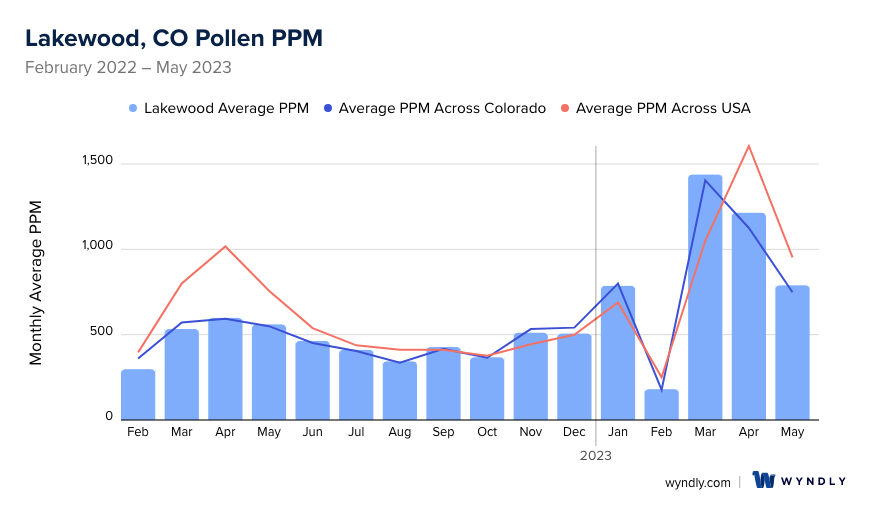
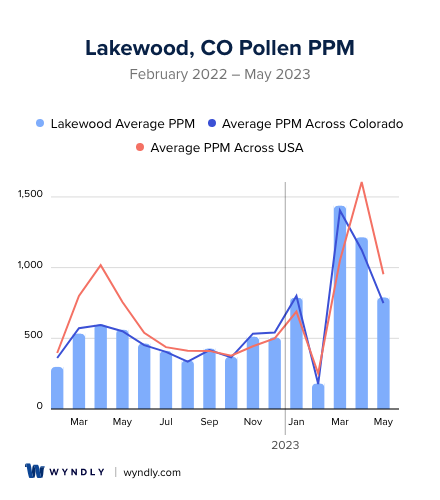
Lakewood, CO Pollen and Allergy Breakdown by Month
Grass
When is grass pollen highest in Lakewood, CO?
April has the highest grass pollen in Lakewood, CO with an average PPM of
When is grass pollen lowest in Lakewood, CO?
December has the lowest grass pollen in Lakewood, CO with an average PPM of
Tree
When is tree pollen highest in Lakewood, CO?
March has the highest tree pollen in Lakewood, CO with an average PPM of
When is tree pollen lowest in Lakewood, CO?
September has the lowest tree pollen in Lakewood, CO with an average PPM of
Weed
When is weed pollen highest in Lakewood, CO?
November has the highest weed pollen in Lakewood, CO with an average PPM of
When is weed pollen lowest in Lakewood, CO?
February has the lowest weed pollen in Lakewood, CO with an average PPM of
Lakewood, CO Pollen Monthly Breakdown by Pollen Type
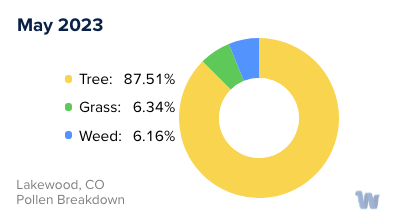
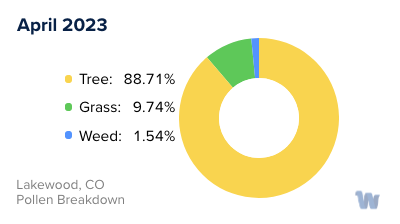
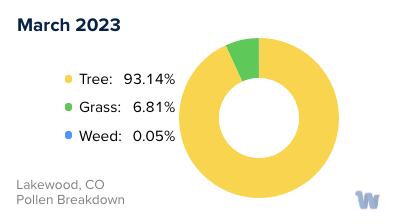
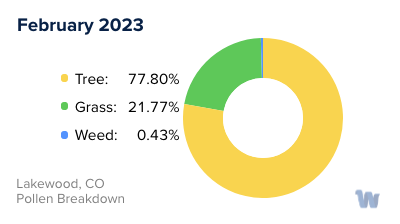
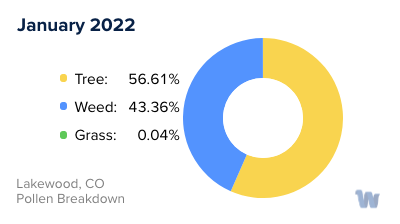
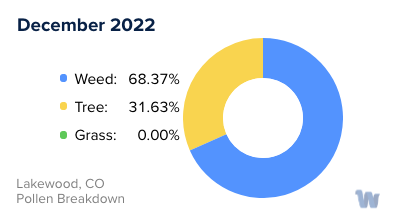
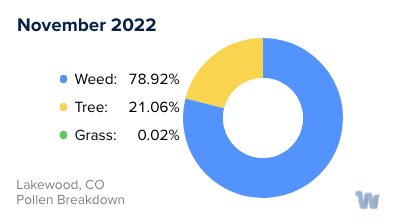
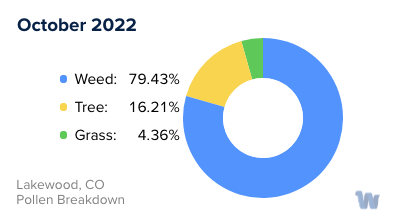
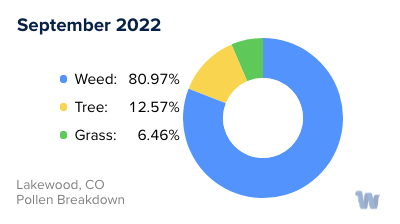
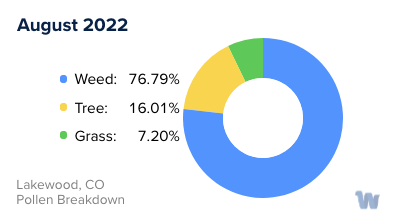
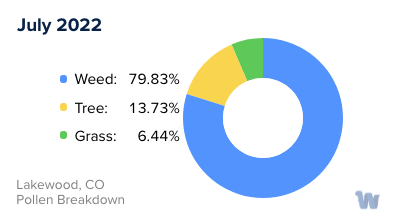
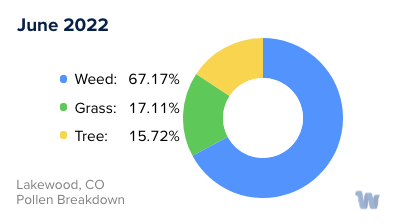
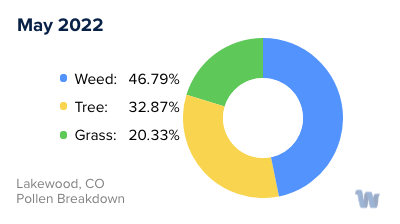
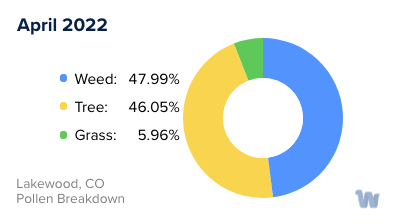
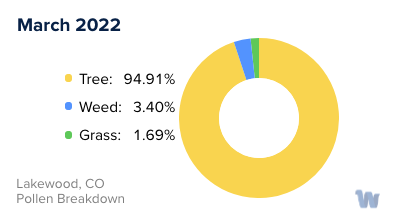
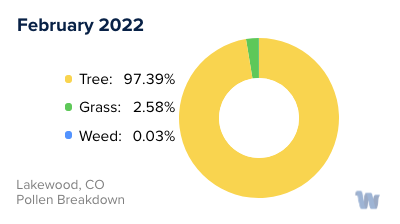
Pollen and Hay Fever in Lakewood, CO
Living in Lakewood, Colorado, you might be familiar with the beauty of changing seasons – the vibrant colors of fall, the freshness of spring, and the warmth of summer. Unfortunately, for some residents, these natural transitions also mean the onset of pollen allergies, often colloquially known as hay fever.
In Lakewood, the primary contributors to pollen allergies are trees, grasses, and weeds. Each has its own specific season, creating a nearly year-round cycle of potential allergens for susceptible individuals.
Spring is often the most challenging time for allergy sufferers in Lakewood, primarily due to tree pollen. As the snow melts and new life begins to bloom, trees like oak, cedar, pine, and especially cottonwood – a particularly prolific pollen producer and a common sight in Lakewood – begin their reproductive cycles. This results in an outpouring of tiny, lightweight pollen grains that can travel for miles on the wind, finding their way into homes and lungs alike.
Once the tree pollen has peaked and begun to wane, grass pollen takes the stage. Summer in Lakewood sees an increase in pollen from grass species such as ryegrass, bluegrass, and timothy grass. These grasses are common in the city's parks and residential lawns, making summer a season of sneezing for many.
As the heat of summer fades into the crispness of fall, weed pollen becomes the primary concern. Ragweed is a common culprit, but in Lakewood, there's also a significant contribution from sagebrush and other mountain weeds that are native to Colorado. These hardy plants release their pollen late in the year, extending the allergy season well into autumn.
Understanding the sources and timing of these pollen types can be an essential first step in managing allergies. Each season in Lakewood, Colorado brings its own unique blend of pollen, resulting in a cyclical pattern of potential allergens. However, remember that individual responses to allergens can vary greatly, and it's always important to consult with a healthcare provider for personalized advice.

